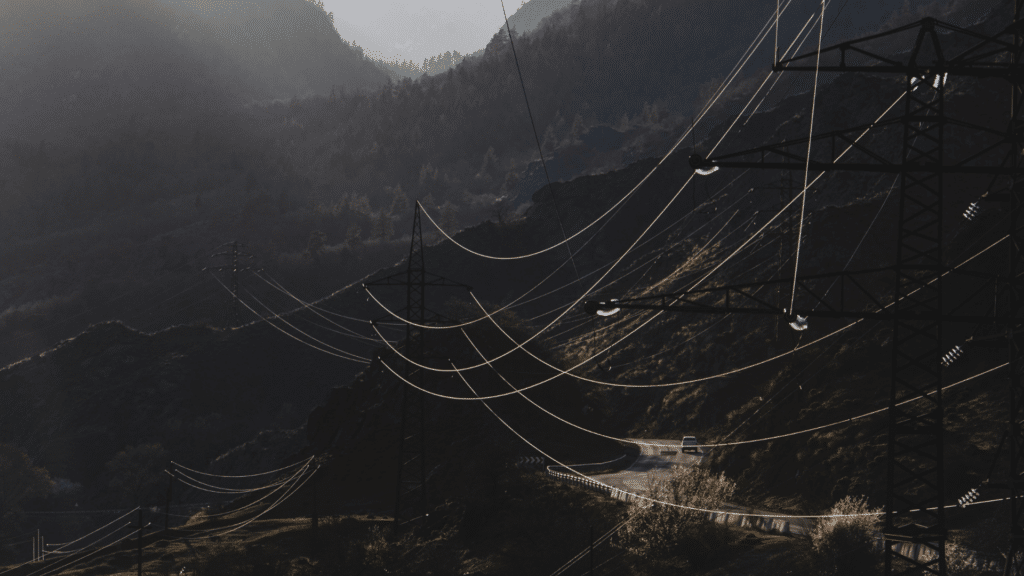A new deal for energy consumers
From the Clean Energy Package to the future of Electricity Network Codes
FSR Topic of the Month by Athir Nouicer, Valerie Reif, Tim Schittekatte
In this Topic of the Month, we look at new developments in the area of electricity network codes and guidelines that were triggered by the recent adoption of the Clean Energy Package (CEP). The recast of the electricity Regulation (Regulation (EU) 2019/943) explicitly lists several areas for new network codes and guidelines. In many other areas, the Electricity Directive (Directive (EU) 2019/944) and the Renewable Energy Directive (Directive (EU) 2018/2001) allow Member States to first experiment with innovative regulation. Best practices may later inspire the development of new European principles or rules or point out necessary amendments to network codes and guidelines.
The research FSR Energy conducts on these areas is done in the context of the European H2020 project INTERRFACE (“TSO-DSO-Consumer INTERFACE aRchitecture to provide innovative grid services for an efficient power system”). INTERRFACE brings together more than 40 partners from all across the electricity sector. Besides thinking about future regulation, several pilots are also being set up as a part of the project.
Week 4: Peer-to-peer trading and energy communities [1]
by Tim Schittekatte
What is it about?
With the ongoing technological innovation (photovoltaic panels, batteries, smart metering…), the number of active consumers with options to manage their load and produce electricity behind their meters is increasing exponentially. Active consumers are formally defined in the e-Directive of the CEP as ‘a final customer, or a group of jointly acting final customers, who consumes or stores electricity generated within its premises located within confined boundaries or, where permitted by a Member State, within other premises, or who sells self-generated electricity or participates in flexibility or energy efficiency schemes, provided that those activities do not constitute its primary commercial or professional activity.’
Until today, practice and research have mostly focussed on the business case of a ‘classic prosumer’, a household with a PV-panel on its roof used for self-consumption. But also new types of interactions between active consumers start to emerge, allowing them to unite in communities or exchange energy peer-to-peer.

Communities
The concept of collectively managed Distributed Energy Resources (DER) assets by a group of individuals who are members of so-called Citizen Energy Communities (CECs) is gaining importance. CECs are defined in the e-Directive as a
‘Legal entity that:
(a) is based on voluntary and open participation and is effectively controlled by members or shareholders that are natural persons, local authorities, including municipalities, or small enterprises;
(b) has for its primary purpose to provide environmental, economic or social community benefits to its members or shareholders or to the local areas where it operates rather than to generate financial profits; and
(c) may engage in generation, including from renewable sources, distribution, supply, consumption, aggregation, energy storage, energy efficiency services or charging services for electric vehicles or provide other energy services to its members or shareholders’.
According to the CEP, the members of a CEC and DER assets can be located physically near but not necessarily. If there is proximity and all electricity generation assets are renewable, the CEC is a Renewable Energy Communities (REC), which is defined in the revised Renewable Energy Directive (REDII). However, RECs are not always a subgroup of CECs as RECs can also engage in the collective management of other energy carriers, e.g. renewable gas, while CECs are limited to electricity. When community members use collectively owned assets to source (part of) their electricity needs, an internal accounting system, possibly based on distributed ledger technology, will need to be developed.
Peer-to-peer trading
There is also the option that DER assets are individually owned and managed but that part of the self-generated energy is traded Peer-to-Peer (P2P) with other members of a P2P exchange. Peer-to-peer trading of renewable energy is defined in the REDII as
‘The sale of renewable energy between market participants by means of a contract with pre-determined conditions governing the automated execution and settlement of the transaction, either directly between market participants or indirectly through a certified third-party market participant, such as an aggregator. The right to conduct peer-to-peer trading shall be without prejudice to the rights and obligations of the parties involved as final customers, producers, suppliers or aggregators.’
P2P platforms can emerge, or P2P can work without intermediary enabled by distributed ledger technology, of which the most prominent type is blockchain. Sousa et al. (2019) explain that start-ups have emerged from R&D projects to address P2P energy trading by focusing on two business areas[2]:
- P2P exchange of energy surplus, where prosumers can exchange their energy surplus with their neighbours, for example through the companies – LO3 Energy SonnenCommunity, Hive Power, OneUp, Power Ledger;
- Energy provision/matching, where prosumers can directly choose local renewable generation, for example through the companies – Vandebron, Electron, Piclo, Dajie, Powerpeers.
In practice, a consumer participating in such type of local trade will have a contract with a supplier and a separate contract with the P2P exchange. The challenge of having multiple electricity providers (e.g. electricity sourced from the classic retailer and from peer-to-peer trade) for one metering point is already being discussed by regulators.[3]
What does the Clean Energy Package say?
A big step forward is the fact that active consumers, energy communities and peer-to-peer trading are included in the CEP. Whether the precise definitions and rights described in the relevant legal texts are satisfactory is open for debate. But at least these new actors/activities in the energy sector have been recognized and a framework is being set up that has to be further specified in national implementations.
The rights of active consumer and CECs are described in the e-Directive, Art. 15 and Art. 16, respectively. Regarding active consumers, Member States shall ensure that final customers are entitled to act as active customers without being subject to disproportionate or discriminatory technical requirements, administrative requirements, procedures and charges, and to network charges that are not cost-reflective. Among other things, active consumers also have the right to sell self-generated electricity, including through power purchase agreements. Regarding CECs, similarily, Member States shall provide an enabling regulatory framework for citizen energy communities ensuring the conditions set out in Art. 16. Important to highlight is paragraph 4 which states that Member States may decide to grant CECs the right to manage distribution networks in their area of operation. The rights of RECs are described in Art. 22 of the REDII. In contrast to CECs, the management of distribution networks is not an option. However, Art. (22, 4(c)) states that the national regulatory frameworks shall ensure that the relevant distribution system operator cooperates with renewable energy communities to facilitate energy transfers within renewable energy communities.
Peer-to-peer trade is mentioned in Art. 21 of the REDII on renewable self-consumers. More precisely, paragraph 2(a) of that article states that Member States shall ensure that renewables self-consumers, individually or through aggregators, are entitled to generate renewable energy, including for their own consumption, store and sell their excess production of renewable electricity, including through renewables power purchase agreements, electricity suppliers and peer-to-peer trading arrangements. Important to add is that renewable energy consumers shall be entitled to such activities without being subject to disproportionate or non-discriminatory (network) charges and procedures. Among other things, interesting to add is that Member States shall also ensure that renewables self-consumers located in the same building, including multi-apartment blocks, are entitled to engage jointly in activities referred to in paragraph 2 and that they are permitted to arrange sharing of renewable energy that is produced on their site or sites between themselves, without prejudice to the network charges and other relevant charges, fees, levies and taxes applicable to each renewable self-consumer (Art. 22(4)).
Which Network Code and Guideline Areas are relevant?
Rules related to peer-to-peer and energy communities are not explicitly mentioned in the network code areas. However, among the network codes areas listed in Art. 59 of the e-Regulation, particularly three areas are deemed relevant for active customers engaged in different forms of collective self-consumption:
- rules for demand response, including rules on aggregation, energy storage, and demand curtailment rules;
- network connection rules;
- third-party access rules.
The first network code area, i.e. rules for demand response, is relevant as DER assets used for self-consumption can also be used to provide explicit demand response (aggregated or not). An important technology in that regard is energy storage. The way demand response and energy storage will be regulated at European-level can impact the business case for all forms of self-consumption.
The second network code area, i.e. network connection rules, is important because it is not clear how to categorize groups of P2P-exchanging individuals or communities within the existing categorization in the grid connection network codes.[4] For example, microgrids with one connection point to the central grid can be seen as load from the perspective of the central grid at a certain point in time and as generation at another.
The third network code area, i.e. third-party access rules, is relevant as access to the transmission and distribution systems as well as the network tariffs that have to be paid for that access can be crucial for individually acting active consumers, active consumers engaged in P2P trade, and active consumers jointly acting within energy communities.
[1] In September 2019, a Global Observatory on Peer-to-Peer, Community Self-Consumption & Transactive Energy Models was launched. FSR takes part in the initiative and leads the ‘’Policy and Regulation’’ work package.
[2] Reference: Sousa, T., Soares, T., Pinson, P., Moret, F., Baroche, T., Sorin, E., 2019. Peer-to-peer and community-based markets: A comprehensive review. Renew. Sustain. Energy Rev. 104, 367–378. doi:10.1016/j.rser.2019.01.036
[3] See p.19 on the discussion about ‘’ Coordination Between Local and “Back-up” Supply’’. For more information, see also the following article and the recent report ‘’ Future enabling the market-wide settlement reform Target Operating Model (TOM)’’ by the GB regulator Ofgem.
[4] For more information about the existing categorization within the grid connection network codes, please consult Chapter 8 in Schittekatte et al. (2019).






